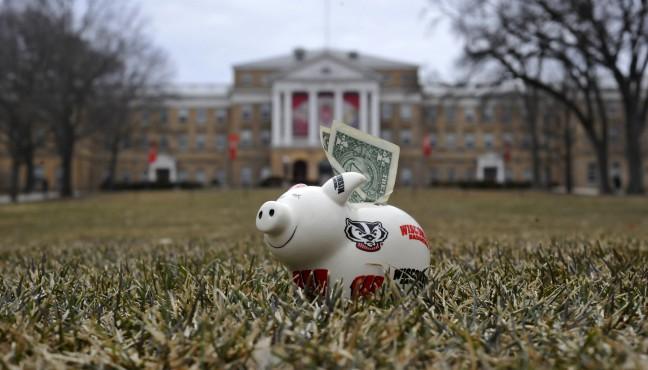Here’s an issue we can all relate to. If you are reading this article, it’s safe to say you have some student loans. It is also likely you will have these loans for a very long time — anywhere between 10 and 30 years.
Students in Wisconsin have about $24 billion in loan debt, and nationwide, student loan debt hovers around $1.5 trillion in total, making it the second highest consumer debt category behind mortgages.
A student who graduates with a Bachelor’s degree from UW will typically have $28,000 in debt — which is below the state average of $30,000.
In an attempt to lighten the burden, in the Gov. Tony Ever’s budget proposal is an authorization to conduct a study on how to create a state-run student loan refinancing authority. This means the state government will pay off existing loans and charge a different, typically lower, interest rate. Many states that have student loan refinancing authorities pay for the programs through municipal bond sales.
Gov. Evers proposes state-run student loan refinancing system in new budget proposal
Democrats have unsuccessfully attempted similar legislation in 2013, 2015 and 2017. Is there a chance Republicans will suddenly change their minds this time around?
The likelihood of that is somewhere in fairy-land. Democrats argue that “$24 billion stand[s] between thousands of Wisconsinites and their ability to attain the middle class.”
Republicans, on the other hand, argue the best way to keep debt low is to keep costs low, and the state has already done so with the tuition freeze. They also argue that private financial institutions are better equipped to refinance loans than the state government.
Ultimately, both sides are interested in helping student loan-holders, but they differ on at which point to intervene — treating the negative effects directly or preventing the costs from rising and by proxy, the original need for taking out loans.
Natural Light’s unnatural solution to the student debt crisis
Refinancing is often a very good option for loan borrowers. For example, to pay off a $28,000 private student loan with an 8 percent annual interest rate over 10 years, you need to make monthly payments of about $340. Refinancing that loan at the same term length but at a 5% interest rate will bring the monthly payments down to $297, a savings of $43 per month — enough to put a dent in some of those utility bills.
Wisconsin is a challenging state in which to create a refinancing authority because it has no agency processing student loans. The federal government and private banks do all of that.
A potential benefit of a refinancing authority is the net-zero effect it would have on the state’s budget if financed properly. Owning and managing loans are ultimately how banks stay afloat. But again, it is not certain the state will be able to turn debt into profit quite as efficiently as the banks — insert rant here about how government is very good at plunging into debt.
Here’s the problem: student debt is not always a safe bill to foot. Students often don’t need skin in the game to borrow. Loaners bank on the fact that the student’s future earnings will pay off the amount borrowed plus interest. That’s why banks will require loan holders to have a good credit score and make a certain amount of annual income in order to refinance.
Companies are attempting to recruit millennials by offering student loan repayment assistance
If you want to break even servicing a loan at a low interest rate, you have to take out a loan yourself and/or heavily scrutinize your borrowers. To compete with other loan servicers’ interest rates is another complication. Already, the federal loans are doled out with ridiculously low interest rates — mine is a little over 4 percent.
On the flip side, Republicans and many others might say that if you are struggling so much to make monthly payments on your loans, then you took on a bigger expense than what you realistically could afford.
College should be cheaper. The response is that cheaper tuition will not fix the problem for those who are out of college, repaying their loans now and struggling to make ends meet. A refinancing option is what these people need to get by.
The strongest response Wisconsin can give to these arguments is that these options do exist, and it might not be in the best interest of student loan borrowers to trust the government to refinance their loans properly. If and when the government buys student loans, they will actively partake in a risk they may not know how to successfully manage. It is something loan servicers and banks are just much more equipped to handle.
Lianna Schwalenberg ([email protected]) is a recent graduate with degrees in communication arts and philosophy.














